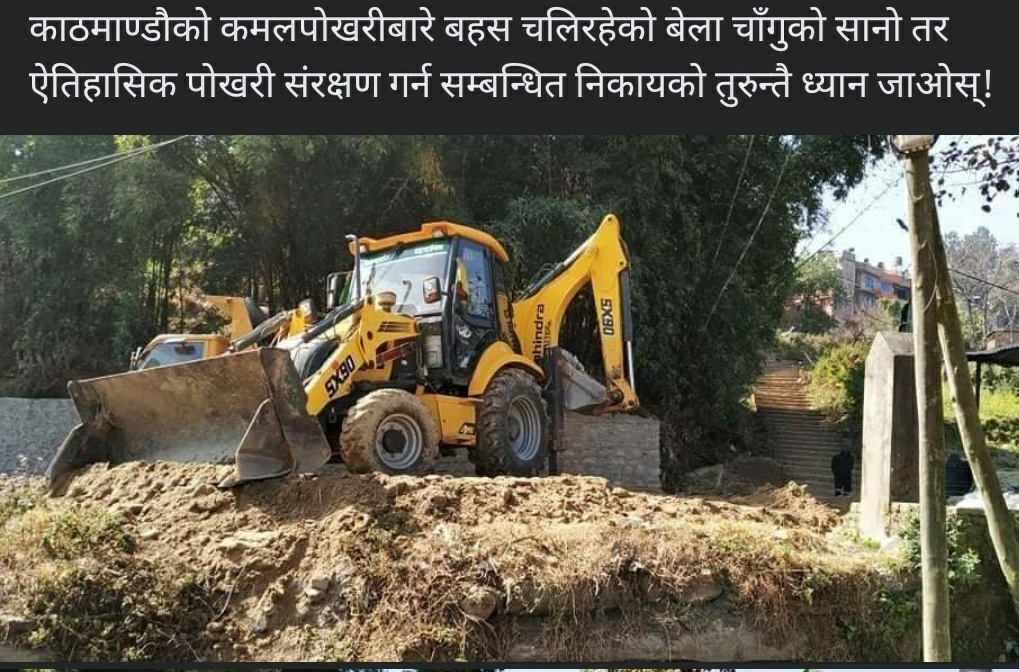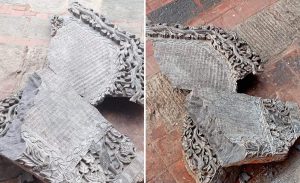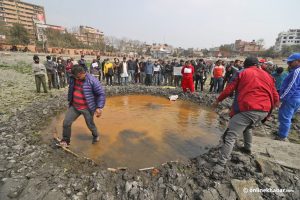On January 27, Ramila Bhadel, a resident of Changunarayan, took some photos of Phalcha Pukhu, a pond situated on the northern side of the Changunarayan temple being destroyed to build a park there. Then, she posted them in the Facebook group ‘Bhaktapurians’ to create a dialogue and raise awareness regarding the preservation of the heritage site.
Soon after her post, the photos went viral and locals of Changunarayan, Bhaktapur and even Kathmandu started pouring out their opinions on social media, voicing their opinions to help preserve it. Bhadel was happy to see the response at first.
But, she realised her happiness was short-lived when she soon received a knock on her door. “The elders and local leaders of the ward came to me and asked me to remove the post. They said my post would be a ‘hindrance’ in their work as others will start protesting,” Bhadel, a local teacher narrates, “What I did not understand was that if they were doing it right, my post should not be a hindrance.”
What made Bhadel even sadder was the people raising their concerns on social media did not come to support her when the local leaders confronted her. Then, she realised social media hypes could not be trusted and relied upon as far as heritage conservation is concerned.
Social media have been an important factor for people to raise awareness, call for participation, inform people about what is happening and so on. With a simple post, it is rather easy to get attention and start up a conversation. But, when it comes to heritage conservation, dialogues and hypes do not always translate into action; the journey has been either lonely or unfulfilling.
The lonely, costly journey
“I had seen the pond since childhood. I asked my grandmother about the pond and she too confirmed that it was there before her,” Bhadel explains her reason for posting the pictures in the Facebook group, “So, I deducted the pond must be at least 100 years old. I thought anything that old deserves to be preserved. And I posted the photos.”
But, the locals confronting her said she should not have posted such things online without proper knowledge.
In response, Bhadel, who claims she is not a heritage activist nor a historian, says, “But, I had posted only to know the legitimacy of the issue and to seek answers; if the pond was worth saving or not.”
But, even that simple quest had costs for her in the form of a confrontation.
“They told me the pond was not archaeologically important nor did it have a natural water resource,” she says, “As far as I heard, anything that is 100-years-old is considered archaeologically important. But they refused to hear me otherwise.”
Despite the incident, Bhadel has not taken down the post nor received any satisfying explanation from the authorities. “I have filed a right to information (RTI) application at the ward office to know more about the origins of the pond. However, I have not heard from them.”
Trouble everywhere
The concern about the lack of support and active participation is not just among the people unaware of the issues and their implications.
About a year ago, heritage activist Yadav Lal Kayastha got a ping on his social media. A local of Hattisar in Kathmandu informed him of the existence of a lo hiti (stone spout) and a phalchha (patio). When he reached the site, he saw a parking lot. “The reported site had been buried and turned into a parking lot, people had even sold the land and wanted to build a complex there.”
In Kayastha’s initiative and his posts through social media, the locals gathered and attested to the existence of the stone spout. The locals even signed petitions and called for help from the Department of Archaeology (DoA). The DoA intercepted and ordered to stop the construction and even coordinated a dig. It got coverage from the mainstream media as well and people geared up to preserve the site.
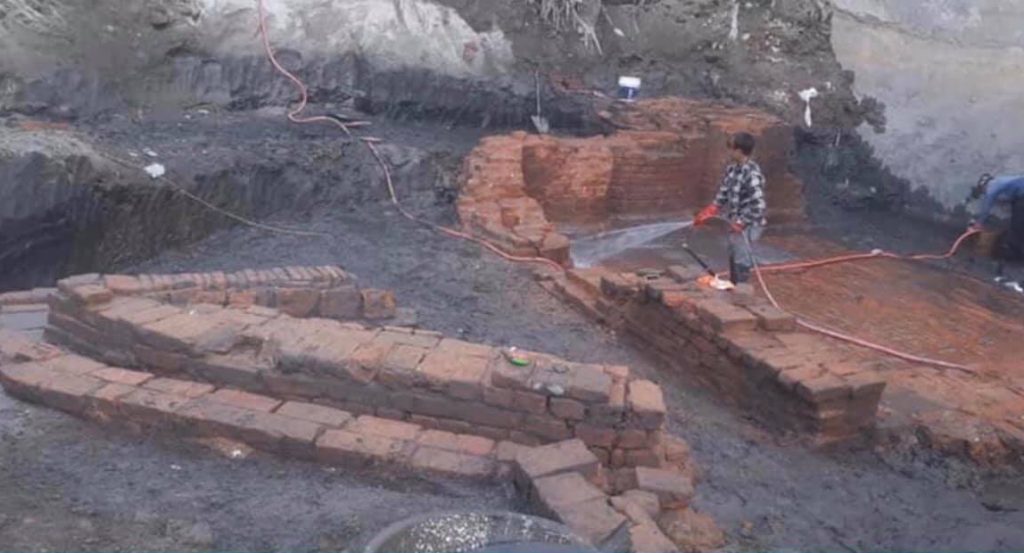
They discovered the brick-laid structure of the site that confirmed that the lo hiti once existed there. They even found a terracotta pipeline that was the source of the hiti. The only thing missing was the head of the spout. Regardless, Kayastha was hopeful.
Meanwhile, he got busy with other projects. After some time, he returned to the site, only to see it had been buried again, and being used as a parking lot again. Back to square one, he felt. The DoA also pulled out and released their stay order on the construction. Frustrated, he reached out to the authorities for answers.
Kayastha suddenly got unofficially summoned by the DoA, where the unprepared activists faced the officials who tried to justify their move and ‘explained’ how they found bricks from the time of Bir Shamsher, hinting that the site was not as archaeologically important and much younger than previously anticipated.
“The authorities are trying to deny that the hiti existed there only because the head is missing,” he says, “Those who agree about the existence are not in favour of preserving it because we do not have the head. But, we are arguing that the site deserves being preserved regardless of the head of the spout.”
Kayastha says he wants the authorities to investigate more on the matter stressing the need to preserve and reinstate the site anyhow. “We do not want to repeat the history of Chhaya Centre in Thamel (where a pond was destroyed to build the complex).”
Hype vs truth
Facebook post also went viral around two weeks ago. This time it was of an archaeological site at Tindhara of Banepa. The post suggested that the site was being encroached and the information surfaced after a local started construction of a house, adjacent to the site.
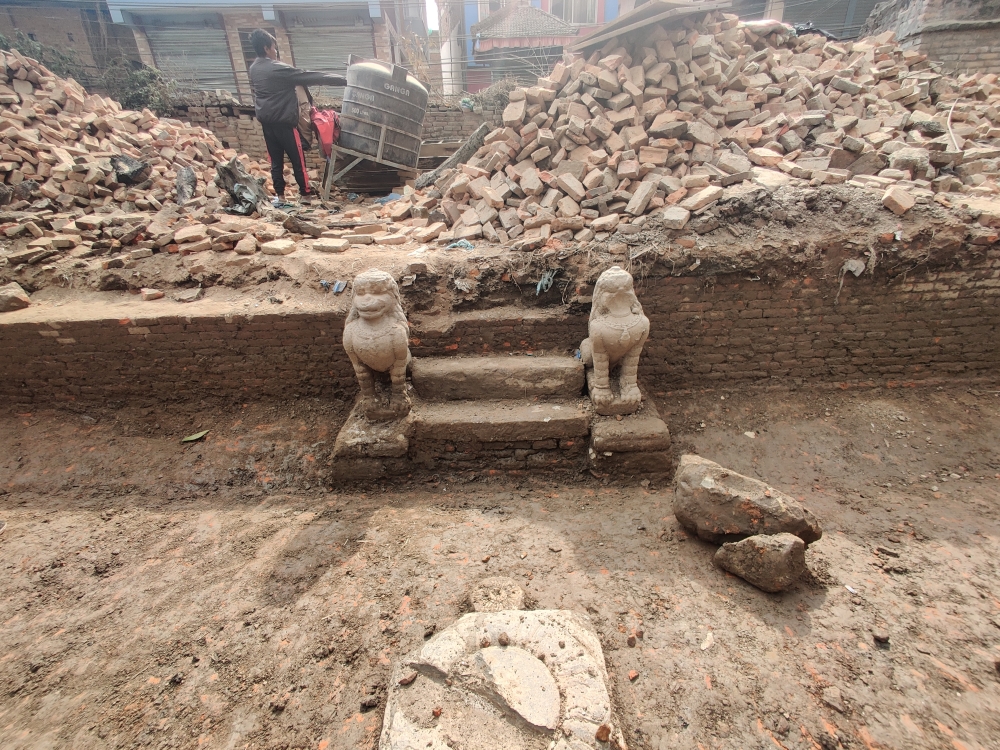
Local Arun Rajbanshi, however, claims that the hype was wrong and so was the information disseminated by it. “This is a very old, historic site with two storeys. The locals have always known about its existence. It was not encroached, just unused.”
Rajbanshi further informs, “It was the aagan chhen (common house for religious and social purposes) of Taleju Mandir, built around the same time as Kathmandu’s Taleju. Since the start, it was a prominent building for the local Rajbashi and Baidar clans. In the Agni Kaanda, a massive fire incident that destroyed hundreds of houses, this building was also destroyed. It has always been in the family, we have the land ownership papers.”
Regardless of the misinformation, however, he says he is grateful for the post that drew the attention of the locals and those outside Banepa.
Since 2008, Rajbanshi says, he has been advocating the authorities to initiate and invest in the reconstruction of the building. Now, after the locals donated their money, they have started the process to clear the courtyard in the premises. Soon, he says, they will start the reconstruction of the building too.
Meanwhile, dozens of others who raised voices about the issue on Facebook and Twitter have already forgotten about the case.



